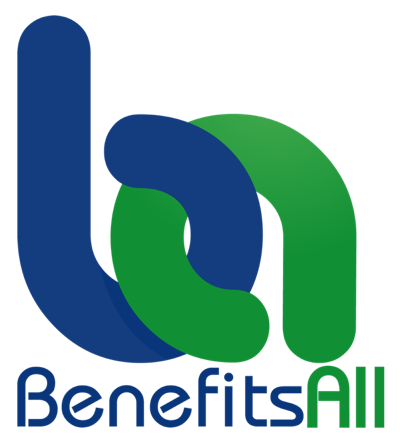BenefitsAll
Everyone can understand health insurance and savings plans better.

Health Care Reform

Who can predict the future of health care reform? For now, we have the Affordable Care Act. If you or someone you know needs health insurance, call or log on to the Exchange website to view health plan options and costs.
Employee benefit professionals also need to understand health care reform. For a quick overview of the law, consider reading Ezekiel Emanuel’s book, “Reinventing American Health Care.”Also, benefit pros can view the full text of the Act (906 pages) here and the reconciliation (55 pages) here.
Employee benefit professionals also need to understand health care reform. For a quick overview of the law, consider reading Ezekiel Emanuel’s book, “Reinventing American Health Care.”Also, benefit pros can view the full text of the Act (906 pages) here and the reconciliation (55 pages) here.
Health Care Reform Updates
Totem RSS is no longer functional. I am sorry for the inconvenience.
Health Care Reform (aka Obamacare) expands access to health insurance coverage to millions who do not have it. Obamacare:
Everyone's situation is different; however, for most signing up for health insurance on the Exchanges is as easy as 1, 2, 3:
- Requires health insurance plans to cover preventive care services for free
- Allows adult children up to age 26 to remain covered under their parent's health plan
- Provides access to coverage to people with pre-existing medical conditions
Everyone's situation is different; however, for most signing up for health insurance on the Exchanges is as easy as 1, 2, 3:
- Who can apply?
- How to apply?
- How much will it cost?
Who Can Apply for Health Insurance on the Exchanges
Any individual/family who is a U.S. citizen or lawful alien may apply for health insurance coverage on a state or federally-operated Health Care Exchange, including:
- Unemployed
- Part-time Employee
- Full-time Employee
- COBRA beneficiary
- Self-employed (no W-2 employees)
- Independent Contractor
- Freelancer
- Near Retiree
- Retiree
- If your employer coverage meets the Affordable Care Act’s minimum coverage and affordability standards, you will not be eligible for any ACA-provided tax credits to help pay for coverage
- If your employer meets ACA standards, they are not required to contribute anything towards the cost of the coverage you purchase on an Exchange. You will be responsible for paying the full cost of individual or family coverage
- If you purchase coverage on an Exchange, you will pay premiums with after-tax money. Most employers have
back to top
Applying for Health Insurance on the Exchanges
The insurance you purchase on a Health Insurance Exchange is private insurance provided by a private insurance company such as Aetna, BlueCross, Cigna, United HealthCare, Kaiser Permanente, Humana, CareFirst, and Highmark. It is NOT government health insurance. The health plans available on the Exchanges include HMOs, PPOs, and all other plan types currently offered by private insurers.
The state you live in, the federal government, or a partnership between the two manages the Exchanges. States that operate their own Exchange will name it. For example, the name of the California health insurance exchange is Covered California.
To find out who operates the Exchange in your state, log on to the Health and Human Services (HHS) website and input your state (for example, Virginia). The response will inform you of the name of the state Exchange or direct you to the HHS site, indicating that the Exchange is federally run.
Each website will have a link to the application you must complete to apply for coverage. Most people will apply for health insurance coverage online (computer). However, you may apply for coverage by phone and on paper. Before enrolling in a health plan, you can see what your out-of-pocket costs (premium, deductibles, copays, coinsurance) may be.
Information You Will Need to Apply for Coverage
back to top
Paying for Coverage
A primary goal of the Health Care Exchanges is to offer comprehensive yet affordable health insurance coverage. Each Exchange will offer several plan options with different costs. A Summary of Benefits and Coverage will accompany each plan and provide examples of what you will pay for basic services if you choose that plan.
- The plans are divided into four cost categories (Bronze Plan, Silver Plan, Gold Plan, and Platinum Plan)
Tax Subsidies Available to Help Pay Cost of Coverage
If your income is at or below a certain level, you may be eligible to receive federal government tax subsidies to:
- information provided on the health plan enrollment application determines if you are eligible for a tax subsidy. The amount of the tax subsidy is calculated when you fill out your application (you can determine if the subsidy is sufficient enough to proceed with the enrollment or if you need to look for even more affordable coverage)
- the tax subsidy is applied to the cost of coverage of the plan you select from the Exchange (as an example if the health plan costs $300/mo. and your subsidy amount is $200/mo. you will pay $100 per month for coverage instead of $300. The subsidy is factored into the quote instead of being quoted $300/mo. for coverage at the time of enrollment, the quote will be $100...)
- because tax subsidies are based on your income, the government relies mostly on income information you and your employer provide to the IRS (there is no requirement to submit copies of income tax returns as the federal government already has access to this information from the IRS)
- adjustments may be made to tax subsidies if your income is less than or greater than reported/expected (if your income is higher than expected and you received a subsidy that is greater than you were entitled to, you will have to repay all or a portion of the subsidy when you file your annual tax return)
Health Care Reform Subsidy Calculator
Use a Subsidy Calculator to estimate what you may receive in federal tax subsidies to help pay some or all of the costs of purchasing health insurance on an Exchange. Coverage not purchased on an Exchange is not eligible for a federal tax subsidy (that includes employer-provided coverage and coverage you purchase on your own and not from an Exchange)
UC Berkeley Labor Center - http://laborcenter.berkeley.edu/healthpolicy/calculator/
Value Penguin - http://www.valuepenguin.com/aca-subsidy-calculator
VERY IMPORTANT NOTE: Subsidy calculator projections are estimates; your actual subsidy amount may be lower or higher than the estimate. You provide your estimated annual household income, age, and number of people in your household to calculate the estimate. Subsidy calculator projections are usually based on the cost of a Silver Plan.
back to top
Health Care Terms, Forms & Contact Information
TERMS: One of the things many people find confusing about purchasing and using health insurance is the terminology used to describe what the plan will pay for medical care and what they will pay.
Five (5) terms to know the meaning of are (All of these terms have the same basic meaning: what you owe…):
- co-payment or copay
- coinsurance
- deductible
- out-of-pocket maximum
- premium
deductible - a specific dollar amount that your health plan may require you to pay out of your pocket before the plan begins to pay. The deductible may not apply to all medical care services you receive; some may be subject to a flat dollar amount (copay). Also, the deductible is in addition to your monthly premium for health insurance coverage. In general, a health plan with a high deductible has a lower monthly premium than one with a low deductible
out-of-pocket maximum (OOPM) - The maximum amount of money you pay for covered medical care services in a benefit period (usually one year). The OOPM does not apply to payments for services not covered by your health plan. Once you have met your OOPM, your health plan pays 100% of covered medical care expenses for the remainder of that benefit period
premium - the amount you must pay monthly or annually for health insurance coverage. Having health insurance does not mean medical care is free. You may pay additional money for the actual care you receive (in the form of copays, coinsurance, and deductibles)
FORMS: There are a few forms you will encounter when applying for health insurance coverage on the Exchanges.
- Enrollment Application
- Employer Coverage Tool (part of the enrollment application)
- Summary of Benefits and Coverage
CONTACT INFORMATION: You can enroll in an Exchange health plan online (computer), by phone, or in person. Assistance with enrollment or any other questions is available by calling 1-800-318-2596, 24 hours a day, seven days a week. (TTY: 1-855-889-4325). Information about Health Care Reform and the Exchanges is available on the HealthCare.gov website.
NOTE: Be careful who you supply information to, especially individuals and companies you did not contact directly. Remember that the best and safest way to apply for coverage is through the HealthCare.gov website and to work with a trained Navigator or Broker authorized to help you find health insurance on an Exchange.
back to top
Wrong Information About the Health Care Reform Insurance Marketplace (Exchanges)
Not everyone thinks the new Health Care Reform law is good. Some people would rather have universal health care (e.g., Medicare-for-All). Others prefer the private health insurance market as it was before Health Care Reform. And some do not like the law because they are confused about what it does and does not do.
You may hear or read inaccurate things about the Health Care Reform Insurance Marketplace (Exchanges). This misinformation includes but is not limited to the following.
Health Care Reform is Medicaid. The Health Insurance Exchanges offer private health insurance plans from private insurers like United HealthCare, CIGNA, and BCBS. When you apply for health insurance coverage on an Exchange, your application will be evaluated to determine if you are eligible for Medicaid coverage, which was expanded to include more individuals under Health Care Reform
The Health Care Reform Insurance Marketplace/Exchanges is one large HMO plan. The Health Care Marketplace (Exchanges) will offer different types of health plans (PPO, HMO, POS, Indemnity, etc.) at different price levels
Health Care Reform replaces COBRA coverage. Health Care Reform does not eliminate COBRA coverage. It provides an alternative to COBRA, which is typically very expensive. Now, former employees who lose their employer-provided health insurance coverage may choose between continuing their coverage via COBRA, if eligible, or purchasing coverage from an Exchange. All employer COBRA notices will include a statement that other available coverage is available through the Health Care Marketplace/Exchange
